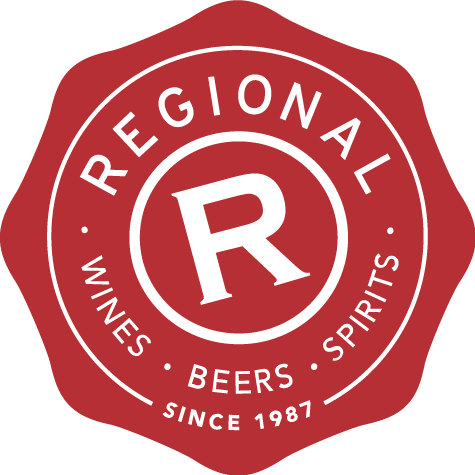
When wine and whisky collide
Something is afoot. Ex-red wine cask aged whiskies used to get a lot of flack but suddenly they’re all the rage. Not only that, NZ Pinot Noir seems to have become the wine of choice. Just what is going on?
It actually started with a release of Longrow Red back in 2015. This is a limited release whisky that has been made over many years now - and often using an ex-red wine cask of some description to age or finish the whisky. Malbec, Chilean Cabernet Sauvignon, Australian Shiraz and Cabernet Franc have all made an appearance, but in 2015, it was casks that had previously held Pinot Noir from Valli winery in Central Otago that made the cut. This was followed in 2019 when Pinot casks from the same winery were used once again.
Ardbeg have followed suit this year with their latest limited release Ardbeg Blaaack. This whisky has been aged in casks that previously held NZ Pinot Noir too (and which may or may not have come from Cloudy Bay winery in Marlborough). So just why has NZ Pinot Noir become so fashionable in whisky circles?
Both these whiskies are peaty and there’s something to be said for the body of a peaty whisky and its ability to take well to the stronger fruitier flavours associated with red wine casks. The fullness of a peaty whisky is also a good balance for the extra tannins that may come from any residual wine in the cask, in addition to the oak tannins of the cask itself. I’d imagine that both these wine casks were European oak (regardless of the wine that aged inside them) and this is another bonus in many people's opinions when it comes to ageing whisky. European oak is generally bigger and spicier with more wood tannin compared to its US counterpart and, once again, peaty whiskies have the oomph to balance this.
But Pinot Noir is one of the least tannic varieties - so the tannin theory falls a bit flat as an answer to why NZ Pinot is suddenly all the rage?
Could it simply be a reflection of the popularity of NZ Pinot Noir around the world, and for that matter, brand NZ itself?
NZ Pinot has gone from strength to strength over the last twenty years and sits right up there in terms of quality. Even so, it still commands a price point which is lower than the likes of Burgundy which means it’s a brand with broad general awareness, being accessible to a larger market. Brand NZ is also on the up in my opinion, with a prime minister who constantly turns heads abroad and garners the interest of the world media - and in a positive way too which is rare in politics. NZ also came out of the 2008 world recession very positively and tourism, until Covid-19 hit, was booming. These are all big positives on a branding level when you’re promoting your special edition release and the marketing dollar needs to stretch as far as possible.
The popularity of NZ Pinot and its new association with whisky could also be linked to the stellar efforts of Michael Fraser-Milne and his team at Whisky Galore, especially in relation to Dramfest, their bi-yearly whisky festival that has become the destination whisky festival for the rest of the world.
The 2015 release of Longrow Red coincides nicely with David Allen (Director of Sales and Marketing at Springbank Distillers ltd) making his first visit to Dramfest in 2014. Follow this with his attendance in 2018 where he was also joined by colleagues Cameron McGeachy (Sales Manager at Cadenhead’s) and Ranald Watson (Director of Sales and Marketing at J&A Mitchell & Co Ltd) and it starts to look very much like these guys have been wooed by the charms of NZ Pinot on their trips to our shores.
The same association can also be made with Ardbeg Blaaack, with Dr. Bill Lumsden from Glenmorangie/Ardbeg attending Dramfest in 2018. Did an encounter then with NZ Pinot spur its use in the latest limited release?
Or maybe two whiskies is not enough to call this current thing a trend - maybe it’s just coincidence? The Dramfest special release from Glenallachie this year was aged in ex-Rioja casks, so maybe what we’re really looking at is a general resurgence in the use of ex-red wine casks. This could be down to the relative difficulty in sourcing sherry casks these days. Sherry casks are highly sought after for ageing by the whisky industry, but the ageing process for sherry is not conducive to these casks being readily available (especially since the ban on shipping sherry in casks in the 80s). As such, there is a supply and demand impairment meaning the cost of these casks, which are now made specifically for the whisky industry, is relatively high when compared to bourbon and wine casks.
So perhaps we are witnessing a shift to wine casks purely as an affordable and available alternative source of oak (and often European oak too). When you factor in that an ex-wine cask may have aged wine for as little as 1 or 2 years, and the extraction by the relatively low alcohol contents will be less - one realises that these casks offer great flavour potential.
Red wine finished whisky may not be your cup of tea but, if like me, you like a bit of variety in your life, then the use of these casks is certainly a positive. Here are a few to try if you’re feeling adventurous…
Ardbeg Blaaack Limited Edition - available in store and online Saturday 30 May
Ballechin 'straight From The Cask' Bordeaux 2007 /11 Years Old 60.2% 500 ml - $149.99
Arran Cote-rotie Cask 50% 700 ml - 109.99
The Oamaruvian NZWC 55.888%
Deanston 2008 Bordeaux Red Wine Cask Matured 58.7%
